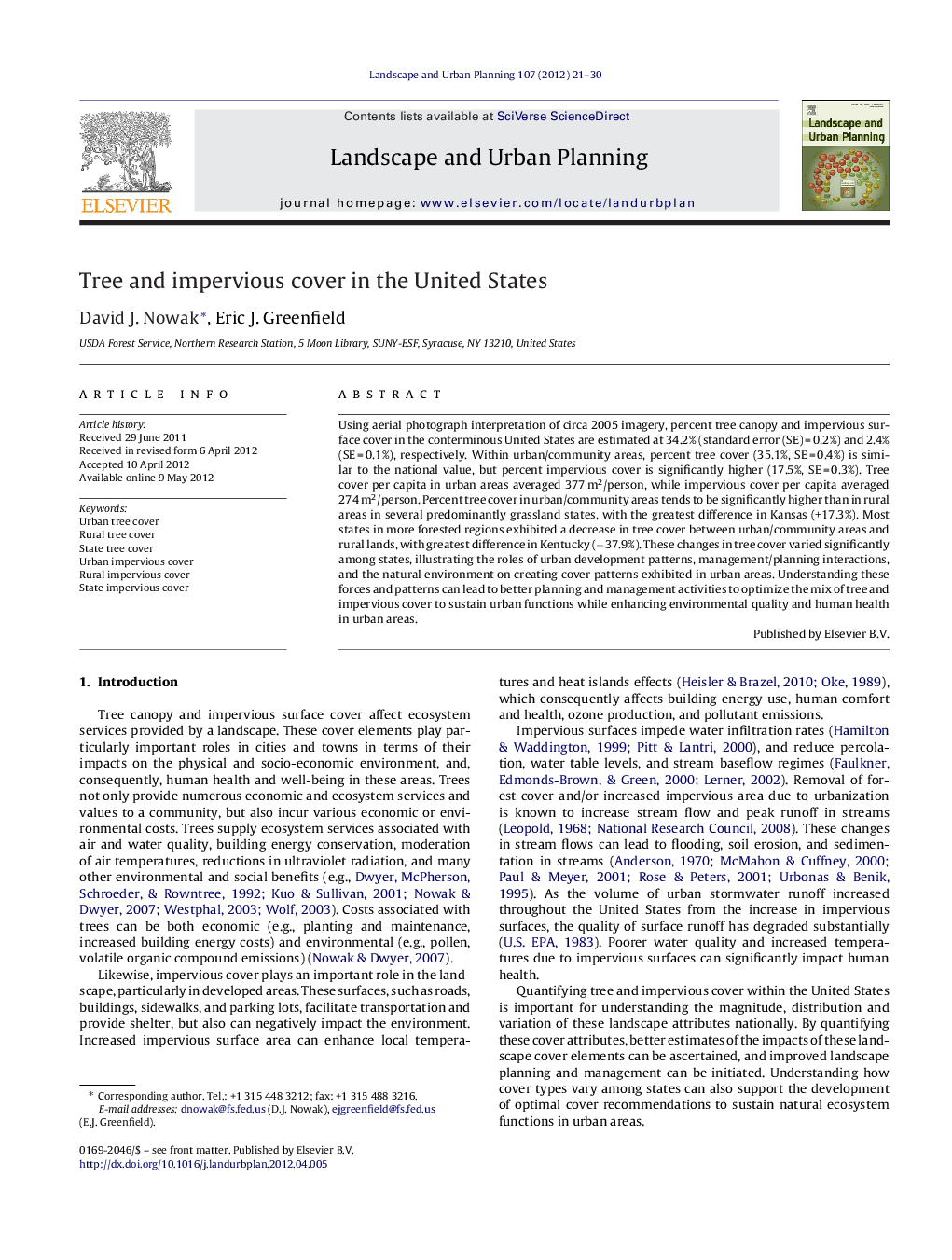| Article ID | Journal | Published Year | Pages | File Type |
|---|---|---|---|---|
| 1049429 | Landscape and Urban Planning | 2012 | 10 Pages |
Using aerial photograph interpretation of circa 2005 imagery, percent tree canopy and impervious surface cover in the conterminous United States are estimated at 34.2% (standard error (SE) = 0.2%) and 2.4% (SE = 0.1%), respectively. Within urban/community areas, percent tree cover (35.1%, SE = 0.4%) is similar to the national value, but percent impervious cover is significantly higher (17.5%, SE = 0.3%). Tree cover per capita in urban areas averaged 377 m2/person, while impervious cover per capita averaged 274 m2/person. Percent tree cover in urban/community areas tends to be significantly higher than in rural areas in several predominantly grassland states, with the greatest difference in Kansas (+17.3%). Most states in more forested regions exhibited a decrease in tree cover between urban/community areas and rural lands, with greatest difference in Kentucky (−37.9%). These changes in tree cover varied significantly among states, illustrating the roles of urban development patterns, management/planning interactions, and the natural environment on creating cover patterns exhibited in urban areas. Understanding these forces and patterns can lead to better planning and management activities to optimize the mix of tree and impervious cover to sustain urban functions while enhancing environmental quality and human health in urban areas.
► Percent tree cover in the conterminous US is 34.2% (266.7 million ha). ► Percent impervious cover in the conterminous US is 2.4% (18.4 million ha). ► Percent tree cover in urban/community areas is 35.1% (14.6 million ha). ► Percent impervious cover in urban/community areas is 17.5% (7.3 million ha). ► Tree cover varies between urban and rural land by state and natural vegetation type.
